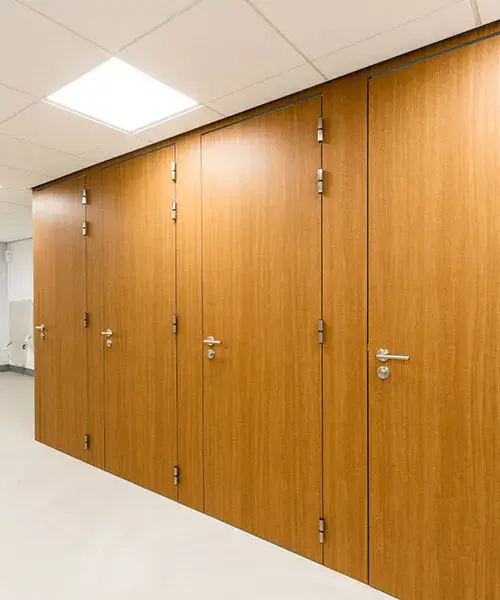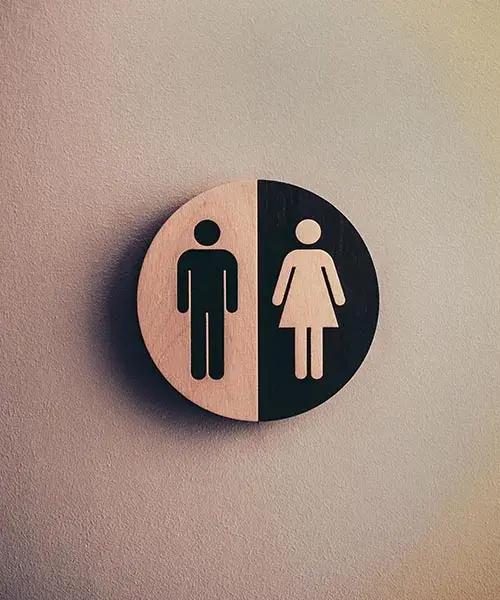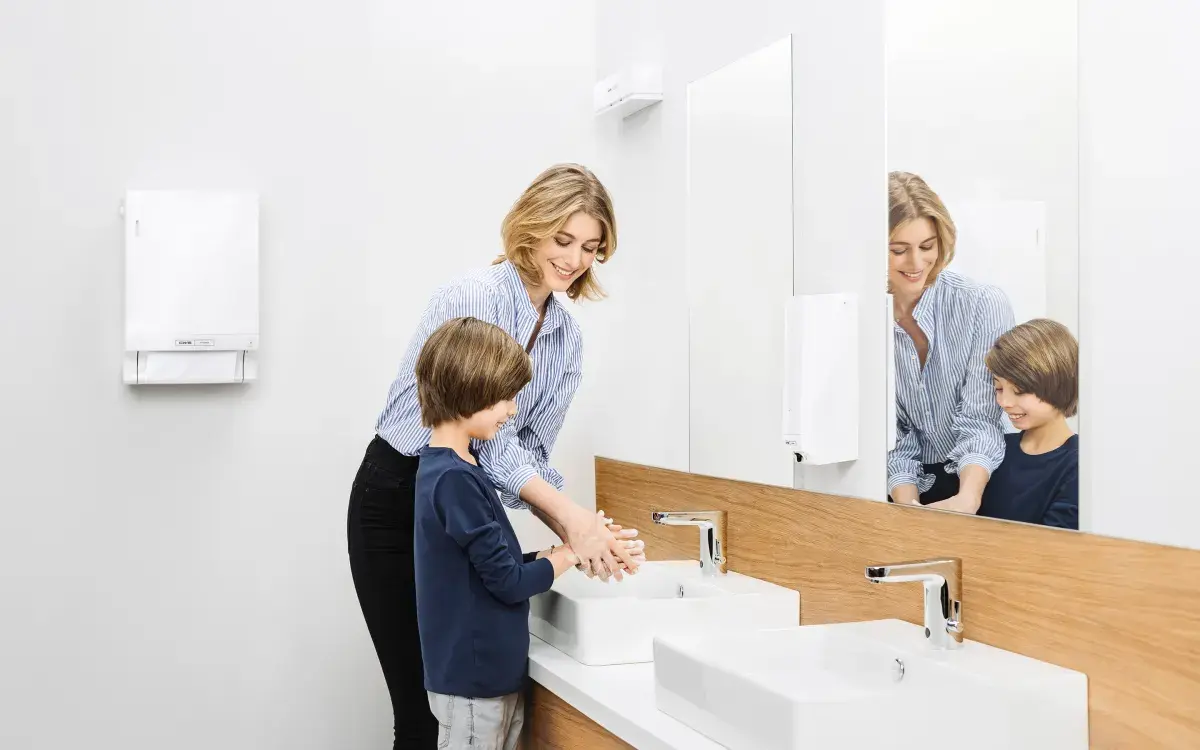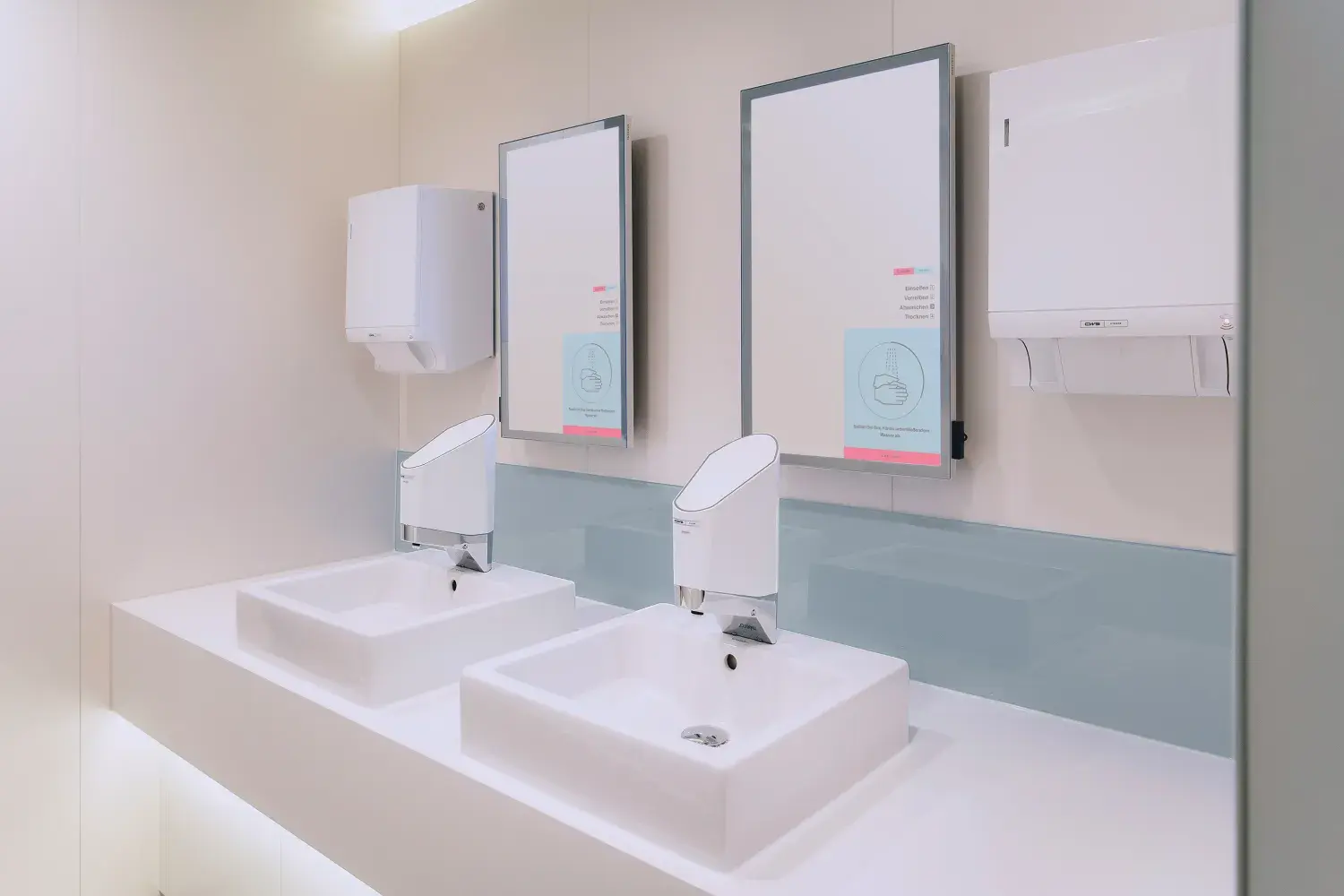Why is good washroom equipment important?
Sanitary facilities are often seen only as an expense, but a thoughtfully designed restroom, equipped with the right amenities, can also prove to be profitable. After all, a company's sanitation facilities contribute to its overall image and influence the impression formed by customers and other visitors who utilize these facilities.
In this context, it is essential not to overlook the company's own employees. A clean washroom area, equipped with proper hygiene facilities, can reduce absenteeism due to illness. For instance, inadequately washed or improperly dried hands create an ideal breeding ground for bacteria and viruses.
Optimal equipment with sanitary facilities in 3 steps
In this article, you will learn which sanitary facilities are part of an optimal toilet facility. The following 3 questions are fundamental to this:
1. How many washrooms and sanitary facilities are needed?
To make an informed decision about the required sanitary facilities and installations, it's essential to either measure or estimate the usage frequency of the designated washroom. This step plays a crucial role in determining the appropriate number of elements such as toilets, sinks with faucets, towel dispensers, soap dispensers, hygiene disposal units, and more.
In high-traffic locations bustling with staff and visitors, a higher number of sanitary facilities is imperative. This helps mitigate potential queues at toilet cubicles, washbasins, and during the handwashing and drying processes.
The minimum number of toilets
Determine the right number of sanitary facilities
Are you facing challenges when it comes to determining the appropriate type and quantity of sanitary facilities? With our extensive experience in washroom equipment, we can offer you a comprehensive cost estimate and expert guidance.
Feel free to fill out our contact form for more information.

2. Who are the users of the Washroom?
Think carefully about the intended users of your washroom facilities. Identify the target audience, whether it is staff-only, open to the public, or intended for both men and women. This thoughtful assessment will guide the design and amenities of the restroom to best meet the specific needs and preferences of the users.
Hygiene boxes for both women's and men's washrooms
First and foremost, the distinction between women's and men's toilets implies separate sanitary facilities for the disposal of feminine hygiene products. This distinction is crucial because products such as panty liners and tampons are considered residual waste and should not be flushed down the toilet. Instead, they must be disposed of in special hygiene bins, usually fitted with a lid.
Even in toilets intended for men, it is advisable to place a hygiene container with a lid in each toilet cubicle as well. This proactive measure not only reduces the risk of clogging toilets, but also leads to savings in sanitation costs and uninterrupted access to toilets.
Public toilet equipment with diaper boxes
Public toilets cater to visitors of different backgrounds and ages, including families with babies and young children. To meet these needs, it is essential to provide a changing table and a dedicated area with a diaper disposal bin. This ensures hygienic and odor-free disposal of soiled diapers, contributing to the overall cleanliness and hygiene of the restroom facilities.

3. What are the options for refill products?
In answering the second question, we have already discussed the importance of matching sanitation facilities to the type and number of toilet users. In this section, we elaborate on considerations for tailoring these facilities to refill products and explore available options.
Availability of refill products
Toilet paper
Making sure no one runs out of toilet paper in the toilet is a priority. This is why CWS offers various solutions tailored to different usage frequencies. An excellent illustration of this are our toilet paper holders, which can accommodate two rolls. When one roll runs out, you can effortlessly switch to the other.
Alternatively, you can choose toilet paper dispensers designed for 'XL rolls' or 'maxi rolls.' These rolls contain significantly more toilet paper than standard rolls, making them ideal for high traffic toilets..
Hand washing
The availability of soap to wash hands is critical in restrooms. For most businesses, a standard soap dispenser with options such as soap foam or cream is sufficient to maintain good hand hygiene. Depending on the frequency of use, it is recommended to choose a dispenser with a 500 ml or 1,000 ml soap capacity.
In environments such as hospitals, the food industry or other environments where high hygiene standards are necessary, the use of disinfectant dispensers is essential sanitary equipment. In these environments, maintaining a high level of hygiene is of utmost importance.
Hand drying
When it comes to towel dispensers for hand drying, there are several options available for different frequencies of use. These include both standard towel dispensers and dispensers designed for larger towel rolls.
An important consideration in this regard is the choice between cotton and paper towels for drying hands. From a sustainability standpoint, we recommend the use of cotton towel rolls. This choice minimizes trash in the restroom, as paper towels generate significantly more waste.
Touch-free options
As an optional feature, you have the choice of implementing touch-free dispensers or faucets, also called "non-touch" variants. These are equipped with sensors, eliminating the need for users to physically touch the water faucet, soap dispenser, towel dispenser or hygiene boxes. This not only increases convenience and comfort for restroom users, but also promotes better hygiene. With reduced contact, there is less accumulation of bacteria from touch, water and soap residue on faucets and dispensers.

Want to delve into the ideal sanitation solutions tailored to your specific needs? Our team is ready to provide you with personalized guidance and insights!

